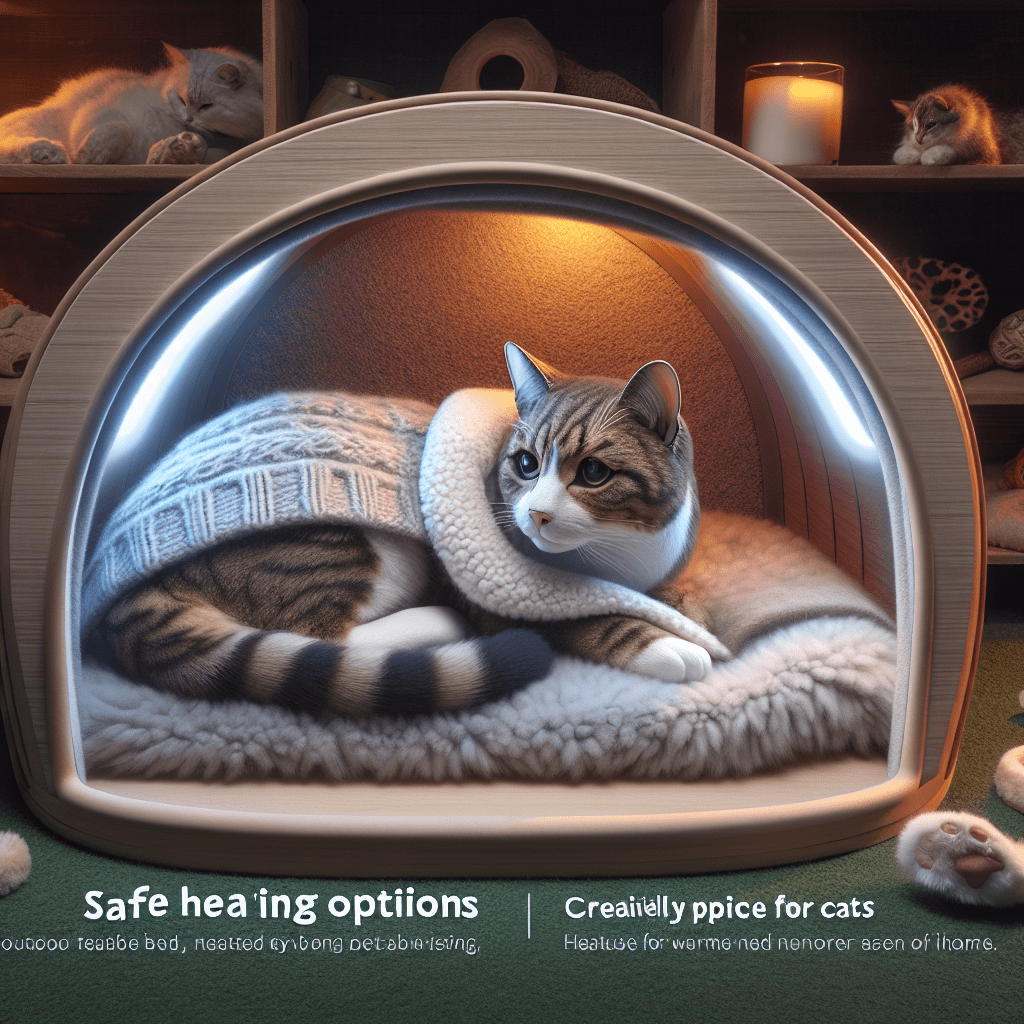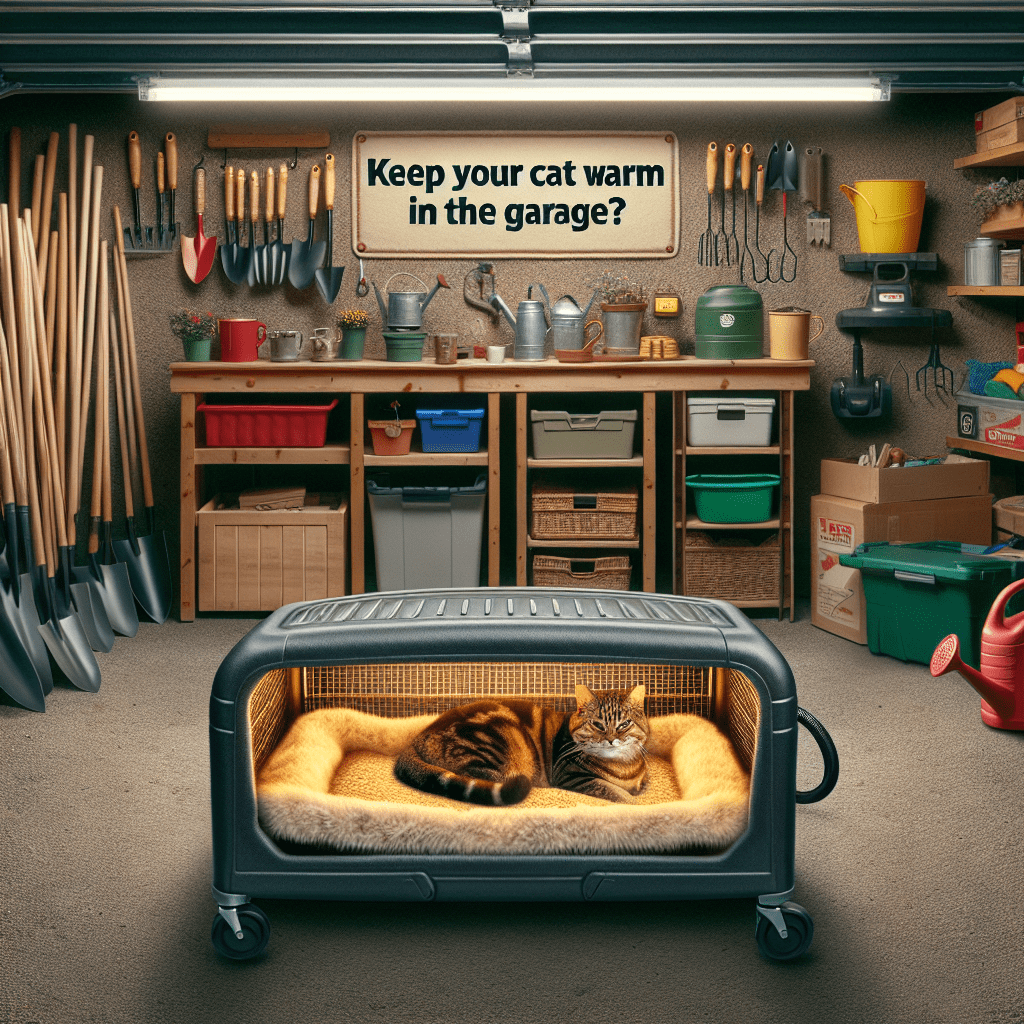Introduction Keep Your Cat Warm in the Garage
Hey, fellow pet lovers! Brace yourselves because with the chill of winter approaching, we’ve got an exciting adventure for all you cat owners: transforming your garage into the ultimate cozy retreat for your furry companions. Imagine creating a snug hideaway or a majestic palace for them – the key is ensuring it’s a warm and safe haven. Dive into our blog post, where we’ll spill the beans on how to keep your kitty toasty, joyful, and in tip-top health during the colder months. Let’s make this winter perfect for our feline friends!
Table of Contents
Understanding the Needs of Cats in Cold Weather
Cats are naturally resilient creatures, but even the hardiest feline will struggle in freezing temperatures. Understanding how cats behave in cold environments can help you provide the best care.
Cat Behavior in the Cold: Cats seek out warm spots when the temperature drops, often curling up in tight spaces to conserve body heat. They might also become less active and sleep more to preserve energy.
The Importance of Warmth: Keeping your cat cozy is super important, not just for their comfort but also for their health. If they get too cold for too long, they could end up with hypothermia or frostbite, and that’s especially risky for older kitties or those with health issues.
Signs Your Cat is Cold: Look out for shivering, lethargy, and cold ears or paws. If your cat constantly seeks warmth, it’s time to take action.

Cold Weather Feeding
When the temperatures drop, your cat’s nutritional needs may change to help them maintain a healthy body temperature. Providing the proper diet can significantly improve their overall well-being during the winter months.
Increased Caloric Intake: Like humans, cats burn more calories to stay warm in cold weather. Consider offering a slightly larger portion of their regular food or switching to a high-calorie diet to ensure they get the extra energy they need.
Wet vs. Dry Food: Wet food is excellent for keeping your cat hydrated because it’s packed with extra moisture. But, watch out – leave it out too long in the cold, and you’ve got a cat food popsicle on your hands. Mixing in some dry food can be the perfect middle ground, keeping your furry friend both hydrated and fed no matter what.
Warm Meals: Serving slightly warmed-up meals can appeal to your cat’s senses and help them stay warm from the inside out. Warm their food to a comfortable, lukewarm temperature—not too hot—to make it more enticing and beneficial.
Frequent Feeding: Smaller, more frequent meals can keep your cat’s metabolism active, providing a constant energy source. This approach is beneficial if they spend more time outdoors or in a colder environment like the garage.
Paying attention to your cat’s dietary needs and making a few adjustments can help them stay warm, healthy, and happy even in the chilliest weather.

Tips for Keeping Your Garage Cat-Friendly
Transforming your garage into a cat-friendly space involves some thoughtful changes and additions.
Insulate Your Garage: Kick things off by plugging up any drafts and tossing some insulation on those walls and doors. It’s a great way to keep the heat in and make your space more cozy and stable.
Cozy Bedding: Provide your cat with thick, warm bedding. Options like garage cat bedding or a warm cat bed can make a significant difference. Place the bedding in a sheltered spot away from drafts.
Create Cozy Spots: Set up multiple warm areas using boxes lined with blankets or an insulated cat house. Cats love confined spaces that they can snuggle into, providing warmth and security.

Safe Heating Options for Cats
Choosing the correct heating method is essential to ensure your cat’s safety.
Heating Pads and Mats: For pets, opt for a cat heating pad. These pads provide consistent warmth without overheating. Be sure to choose one with a low voltage and automatic shut-off feature.
Heated Cat Shelters: Invest in a heated cat shelter that offers external warmth while keeping your cat safe. These shelters are designed to be weatherproof and maintain a consistent temperature.
Avoid Unsafe Heating Products: Never use space heaters or electric blankets, as they can pose a fire hazard or cause burns. Stick to products that are specifically made for pets to ensure maximum safety.

Additional Measures for Extreme Cold
Additional precautions may be necessary to keep your cat warm during particularly harsh winters.
Monitor Temperature: Monitor your garage’s temp with a thermometer. Try to keep it above 45°F so your cat stays cozy.
Emergency Preparation: Have a plan in place for extremely cold days. This could include bringing your cat indoors or setting up an additional heat source. Make sure your cat has access to fresh water that isn’t fresh.
Regular Veterinary Care: Ensure a veterinarian regularly monitors your cat’s health. Health issues can make cats more susceptible to the cold, so keep up with vet visits and any necessary treatments.
Conclusion
Keeping your cat warm in the garage during winter requires good insulation, safe heating options, and careful monitoring. By making these adjustments, you can ensure your furry friend remains warm and happy no matter how cold it gets outside.
But don’t just take our word for it—join our pet lovers community and share your tips and experiences! We can ensure all our feline friends stay warm and cozy this winter. [CTA about booking a call with a pet care specialist]
Frequently Asked Questions (FAQ)
Q: How can I tell if my cat is too cold?
A: Look for signs such as shivering, lethargy, and cold ears or paws. Your cat may also seek out warm spots more frequently. If you notice these behaviors, it’s important to warm them up immediately.
Q: Can I use a regular heating pad for my cat?
A: It’s best to use heating pads specifically designed for pets, as they are safer regarding heat regulation and typically have safety features like low voltage and automatic shut-off. Regular heating pads can be a burn risk or create a fire hazard.
Q: How often should I change my cat’s bedding in the garage?
A: Check the bedding regularly for dampness and cleanliness. In colder weather, it’s good practice to change it at least once a week or more frequently if it becomes wet or dirty to ensure your cat has a warm, dry place to sleep.
Q: Is bringing my cat inside during freezing weather better?
A: Yes, during severe weather conditions, it’s advisable to bring your cat inside or provide a well-insulated, heated shelter in the garage. Extreme cold can be dangerous for cats, leading to life-threatening conditions like hypothermia.
Q: What temperature should I aim to maintain in the garage for my cat?
A: Aim to keep the temperature in the garage above 45°F. A thermometer can help you keep track and adjust as necessary to maintain a comfortable environment.
Q: Can I give my cat more food to help them stay warm?
A: Increasing your cat’s caloric intake can help them generate more body heat. Consider offering a slightly larger portion of their regular food or switching to a high-calorie diet during the colder months.
Q: Are particular foods more beneficial for my cat during winter?
A: A combination of wet and dry food can be beneficial. Damp food provides extra moisture, while dry food is less likely to freeze if left out. Additionally, serving warmed-up meals can help your cat stay warm from the inside.
By addressing these common questions, we hope to provide additional support in keeping your cat comfortable during the winter season. If you have further inquiries, don’t hesitate to contact our pet care specialists.
- Discover Spanish Dog Breeds loyal guardians to playful pets
- Top 5 Dog Breeds with Back Problems and How to Help Them
- Shiloh Shepherd Breed Secrets Traits, Care, and More
- Discover 15 Stunning Dog Breed Husky Similar Today
- Howling Hound Breeds Meet 26 Top Dogs for Home and Hunt
Sarah Smith is a passionate dog and cat enthusiast, blogger, and pet care expert. With years of experience researching and writing about various dog breeds cat breeds, she brings a wealth of knowledge and insight to her blog, PetPession.com. Sarah loves exploring the unique traits, histories, and care needs of different breeds, helping pet owners make informed decisions. Her mission is to create helpful, friendly, and well-researched content that both educates and celebrates the joy of pet ownership. When she’s not writing, Sarah enjoys outdoor adventures with her own furry friends.

